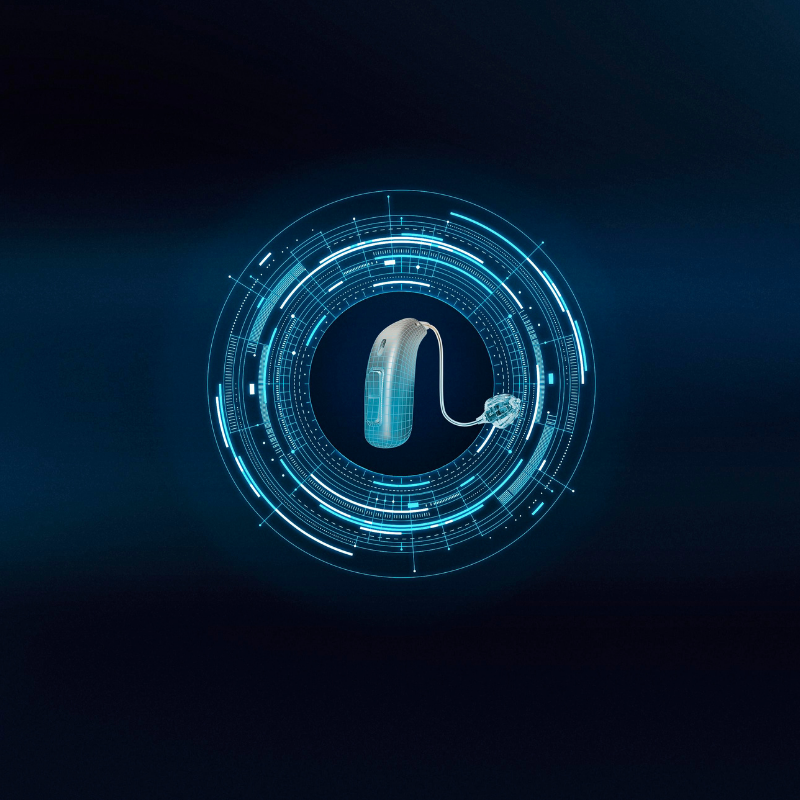
For the past 30 years, advanced signal processing has mainly been driven by two factors:
Firstly, increased knowledge of psychoacoustics and hearing loss has demanded more advanced signal processing to counteract hearing aid side effects, experienced by the hearing aid user. Secondly, the constant development of technology has opened doors to new scenarios that has helped make the life of hearing aid users easier. These two factors have shifted during the years, being the major driver of development.
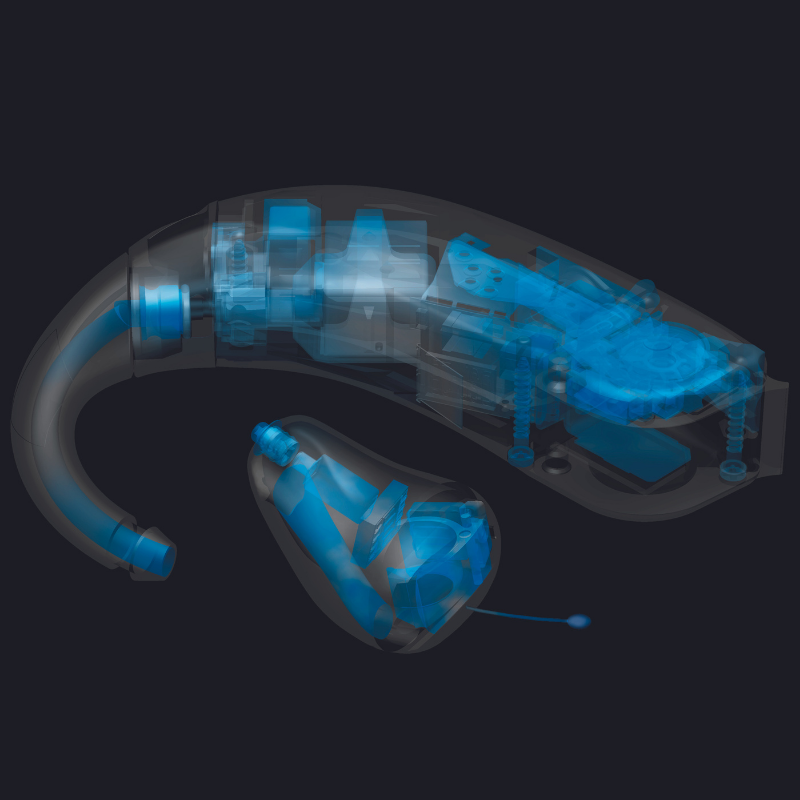
By the end of the 1990’s algorithms were developed to counteract the acoustical feedback in hearing aids. Users with severe hearing loss needed hearing aids with high gain. A big problem was that the hearing aids would be howling, often without the user knowing it. Anti-feedback systems were made to enable providing higher gain without feedback.
Another way of addressing acoustical feedback is to make sure that the hearing aid is tightly fitted to the ear with as little leakage as possible. In a tightly fitted system the user’s own voice gets trapped in the ear canal resulting in a very muffled sound quality of own voice. This problem is prominent for users with mild to moderate low frequency hearing loss. Several attempts to solve this problem have been tried, using advanced signal processing – unfortunately this is not possible.
In 2001 Oticon introduced the Adapto hearing aid that utilized an anti-feedback system which allowed an opening of the ear mold. This significantly improved the sound quality of the user’s own voice and allowed the users the benefit of their remaining hearing. This became a great success, and it was the birth of open hearing aid fittings.
Back in the beginning of the 1990’s a joint research program between Oticon, Widex and Danavox at the Technical University of Copenhagen was trying to find solutions to increase speech intelligibility in noise. A method to identify speech in an incoming signal was developed as part of the project. After the project was finalized, engineers in Oticon worked on a method to refine it. Director of research in Oticon, Claus Elberling had a significant role in this work. It was decided to implement the method in the Adapto hearing aid. The method was used to lower the amplification in the hearing aid if no speech is present in the incoming signal to increase listening comfort for the user.
“But at the time the technology didn’t have the capacity at all. The thing is, I don’t know what my own voice actually sounds like. Once you get things like that installed, you experience your voice gets uncomfortable. It is like talking into a can.”
Karen Female, 59 years
“That cigar box effect, when you talk, has over time become more and more faint, and gradually this cigar box effect at least for me has almost vanished.”
Sven Male, 76 years
One of the biggest limitations in hearing aids is the battery power. There is only very limited space available for a battery in the hearing aid, and signal processing is power demanding. Wireless connection is even more demanding in terms of power and has thus not been possible in hearing aids earlier.
Very advanced wireless technology, demanding less power, was developed by Oticon and introduced in the Epoq hearing aid in 2007. No less than three wireless systems were part of the system. A wireless communication between the right and left hearing aid was used to control the signal processing simultaneously in both hearing aids. As soon as a speech signal reached one of the hearing aids, both hearing aids would change signal processing accordingly, and simultaneously. The user only had to operate one of the instruments (change volume or program) on one hearing aid, the other would automatically adjust at the same time. A so-called Streamer could be connected to the Epoq instruments by a wireless connection. The Streamer, that looked like a small remote control, was worn by the user in a neck strap that also acted as an antenna in the wireless system.
The Streamer had a bigger re-chargeable battery that enabled Bluetooth connection to other devices, for instance a cell phone. This allowed the user hands free operation. Now people with even a moderate hearing loss can communicate hassle free on their cell phone. The sound from the cell phone was delivered directly through the hearing aids and into both of the user’s ears.
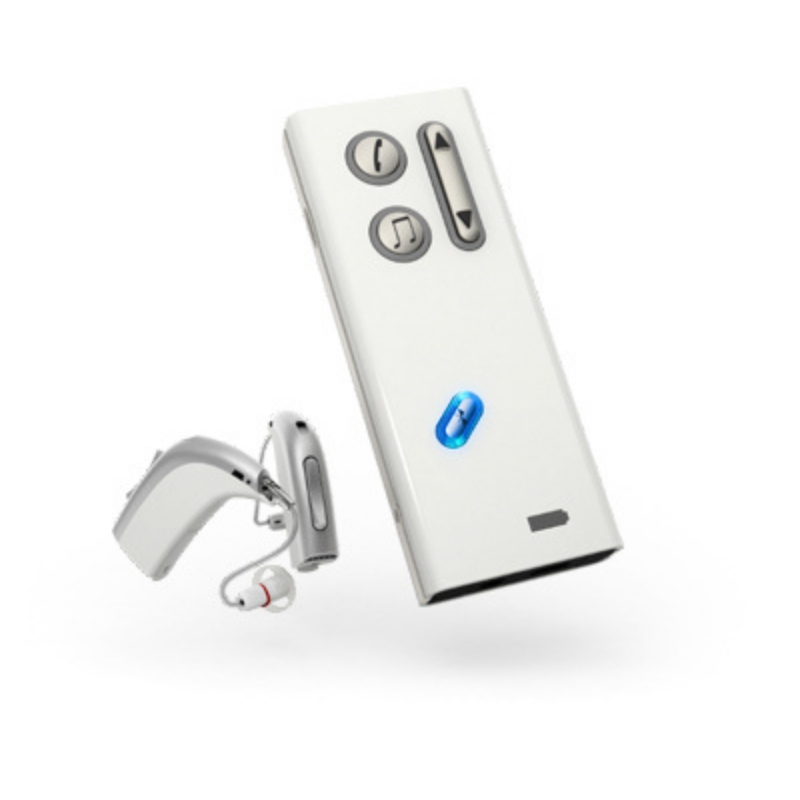
“I’ve been a nurse attending people in their homes, and due to that you get a cellphone for communication. I was able to connect the phone with a Streamer. You’re very dependent on a cellphone as a nurse. You have to talk to doctors and others, and it’s very, very important that you hear the words correctly.
I remember before I got the streamer and had to talk on the phone, I was like: “I really hope I heard the right thing”. I just had to repeat it; “Is it like this and this and that?”. Because just imagine if I accidently did something wrong.”
Bente Female, 67 years
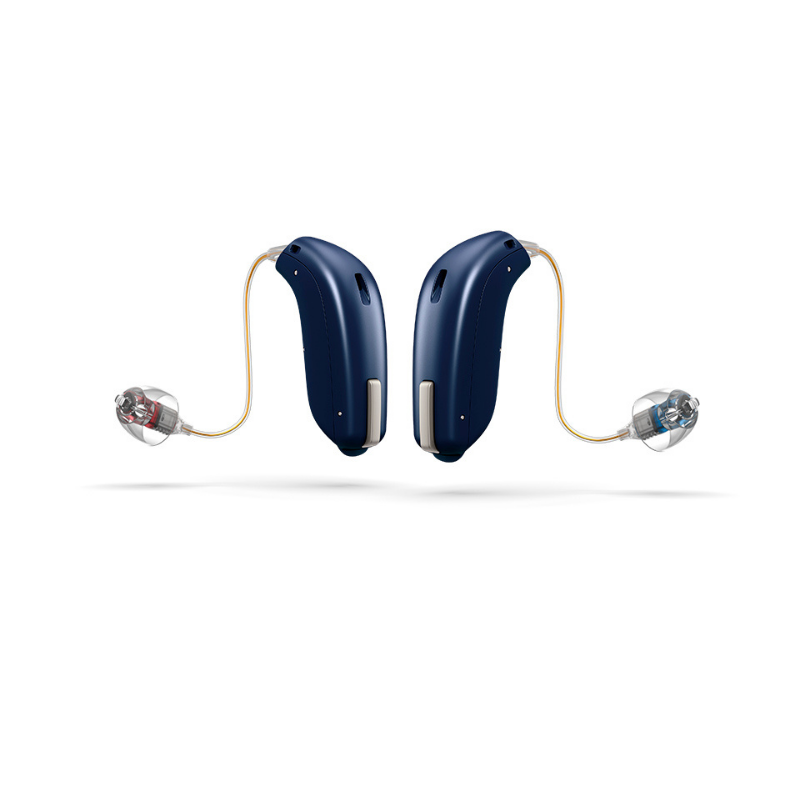
More and more sophisticated signal processing has been developed to ease communication in difficult communication situations and sound environments.
In order to be able to demonstrate the advantages of new signal processing algorithms many resources have been used to develop clinical tests that validate the effect of a new idea. Research carried out at Eriksholm Research Centre has led to a method using pupillometry, monitoring the size of the eye-pupils. A change in pupil size can be objectively measured. It has been shown that the pupils change in size as listening conditions become more difficult. Oticon Opn was introduced in 2016 and features an advanced signal processing. Pupillometry was used to document the advantage of Oticon Opn. It was shown that people used significantly less effort in difficult listening situations with Oticon Opn, compared to their existing hearing solution.
A special low energy Bluetooth connection was available in Oticon Opn. The hearing aid can connect directly to a cell phone which allows the hearing aids to be internet connected. This opened a whole range of possibilities going forward. Oticon Opn could be connected to the IF This Then That (IFTTT) services. An internet connected doorbell can let the user know when someone is at the door by giving a spoken message directly into the ear of the user: “Someone is at the door”. Internet connected equipment like fire or smoke- alarms could let the user know if part of the house is covered in smoke or even burning. More and more services are constantly offered.
With the introduction of Oticon RemoteCare, hearing care professionals became able to do remote adjustments of hearing aids. By downloading the RemoteCare app, the user can ask for a remote consultation. The advantage is that the user does not have to travel to visit a clinic, and they can try out a new setting in the hearing aid in their familiar surroundings. Furthermore, the hearing care professional can do better counselling based on the users experience in their familiar acoustic surroundings.
“My wife was very happy and satisfied with her latest hearing aids (Oticon Opn). The sound from the television went directly into the hearing aids. She could drive the car and talk on the phone even though the mobile phone was in a rucksack in the trunk. When she drove a car with GPS, the directions from the GPS went directly into her hearing aids. She thought it was smart. The hearing aids were also much better in controlling background noises compared to her previous hearing aids. My wife was generally very happy with her hearing aids, which were also the reason why she was able to work as a schoolteacher until retirement, despite her hearing loss.”
Widower to a 72 year old lady.
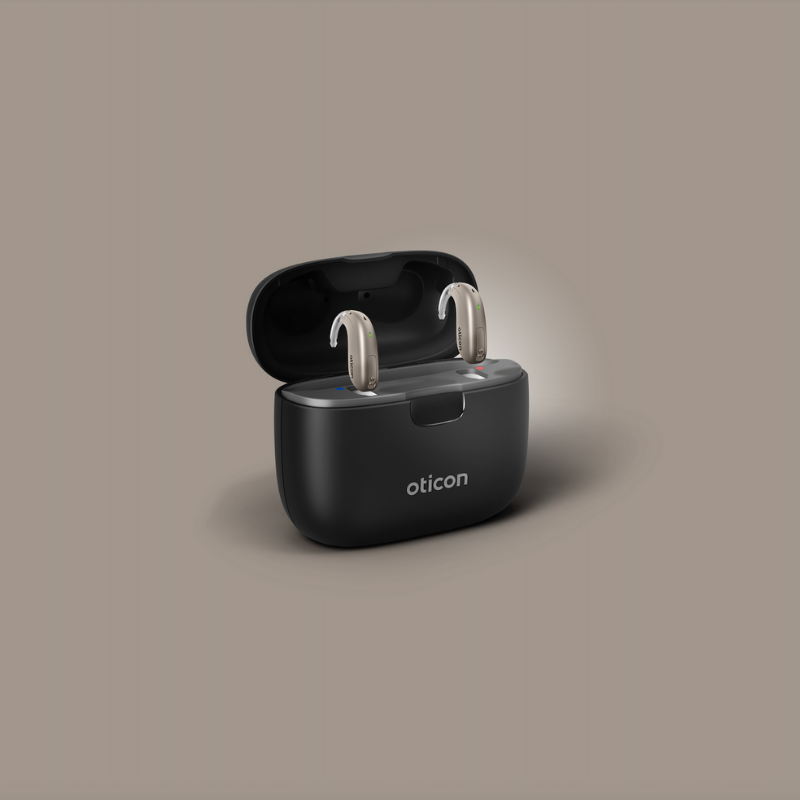
Understanding speech in difficult listening situations and providing clarity to the hearing aid user has always been very difficult. With the introduction of Oticon More in 2020 we came one step closer, since this is the world’s first hearing aid with an on-board deep neural network, which mimics the way the brain functions. Trained with 12 million sound scenes from real life results in a more clear and intelligible sound, Oticon More allows the user to hear all relevant sounds. Rechargeable batteries are now standard, and the hearing aid can either be charged by a desk stand charger or a smart charger, which is a battery bank to be used off-grid.
“So, if you can talk about such a thing as educating or bringing up a hearing aid, then the new hearing aid here is super intelligent and it is really well brought up. With its behavior it constantly ensures the sound is comfortable. And it goes so far that when we get to the extremes, that is, for example a chainsaw, if you are riding your bicycle, and then all of a sudden, there is someone standing with a chainsaw inside the garden, then it is not like you think ” what is happening here? ” No, then you just think that there is someone standing with a chainsaw inside the garden.”
Hans-Henrik Male, 66 years
Technological development was rapidly increasing. Integrated circuitry (IC) became standard with increasing complexity. In the beginning all hearing instruments were analog. Later, they became digitally programmable, and by the end of this period, also fully digital instruments became standard.
In the 1980’s most hearing instruments looked like prostheses with dull colors and a somewhat clumsy design. Over the years, the instruments got smaller with a choice of many different colors, and the design became more appealing. The advance in technology, and the ever-decreasing size of parts used for building the instruments, enabled very small sizes – small enough to be placed “Completely in the ear canal” (CIC).
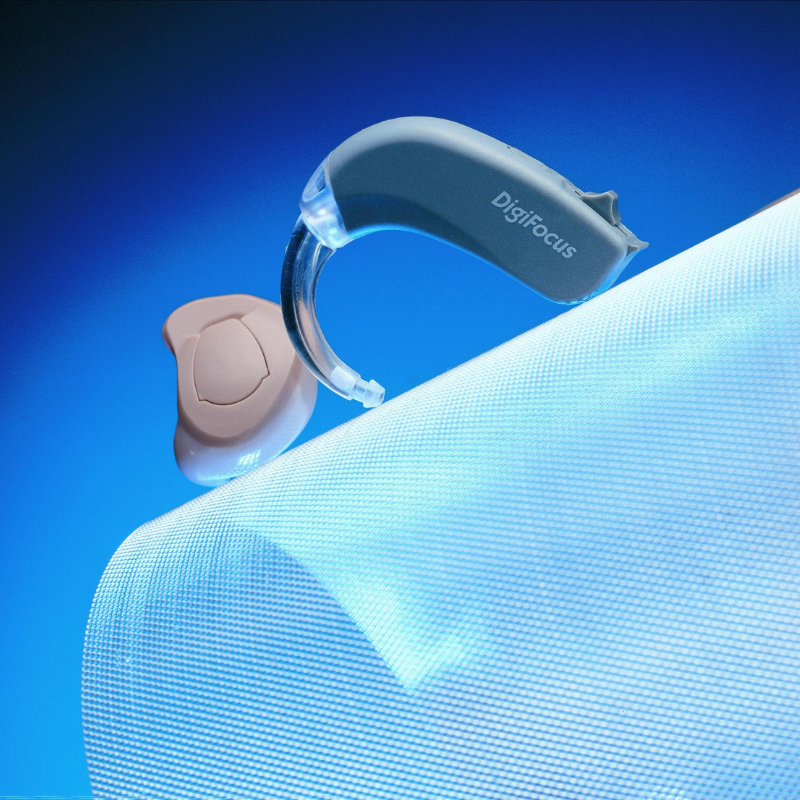
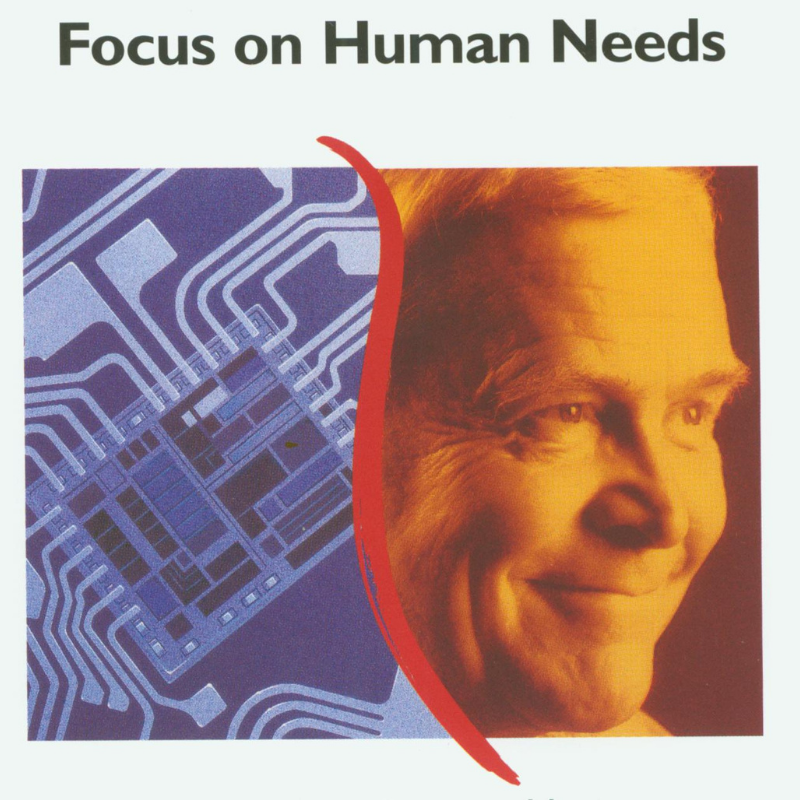
In the late 1970’s the engineers in Oticon were asked to help with information to support the fitting of hearing aids at the public hearing clinics. A lack of audiological knowledge inspired the idea of a research center and Eriksholm Research Centre was opened in 1977.
One of the first tasks of the research center was to come up with information on how to fit hearing aids. Models of hearing loss and prescription formulas were developed and used to change the terminology around hearing aids. It was now possible to adjust the hearing aids according to the audiogram information instead of some more technical terms.
In the beginning of the 1980’s the most popular hearing instrument style was the “Behind The Ear” (BTE). Driven by the commercial market in the USA, a demand for more cosmetically appealing hearing instruments arose. Manufacturing techniques were refined, and it became possible to custom make “In The Ear” (ITE) instruments. First the design was not too good, but gradually it became better.
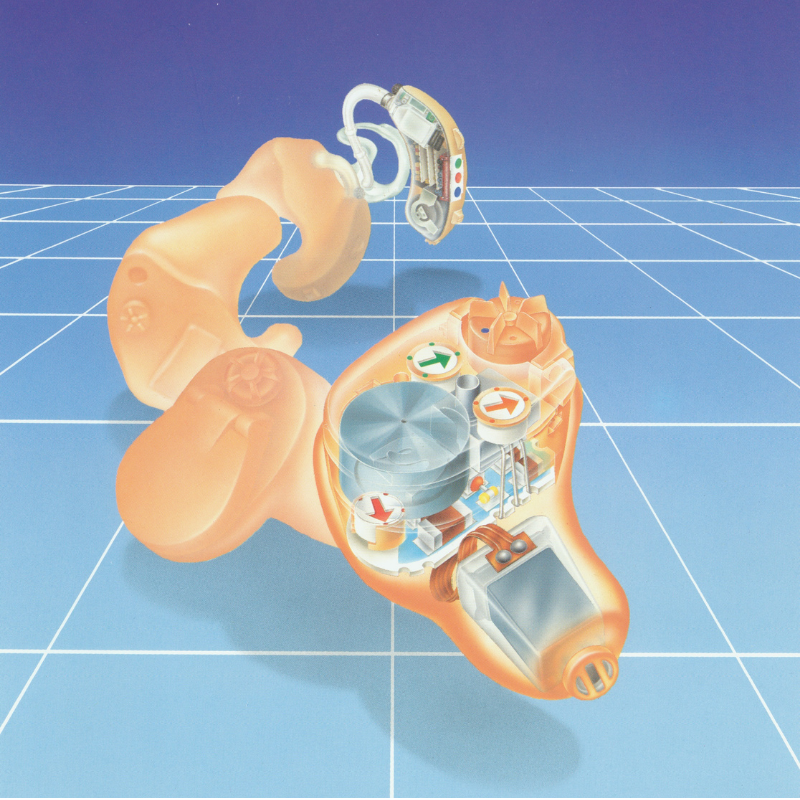
“As a teenager I tried everything. Being long-haired and hiding it. It bothered me a bit as a teenager. But then… The first couple of tries was behind the ear instruments. Then it became in the canal instruments. At the time I got these for the first time, the ones that goes all into the ear canal, off went the hair.”
Frank Male, 54 years
“It was horrible. Horrible. I was almost 40 years old but come on. You do not use hearing aids when you are 40 now. You don’t. That’s why I chose in-the-ear hearing aids at first sight.”
Bente Female, 67 years
“Once someone told me that now I had gotten a pig-colored Lego brick in my ear. I found that to be quite charmless.”
Sven Male, 76 years
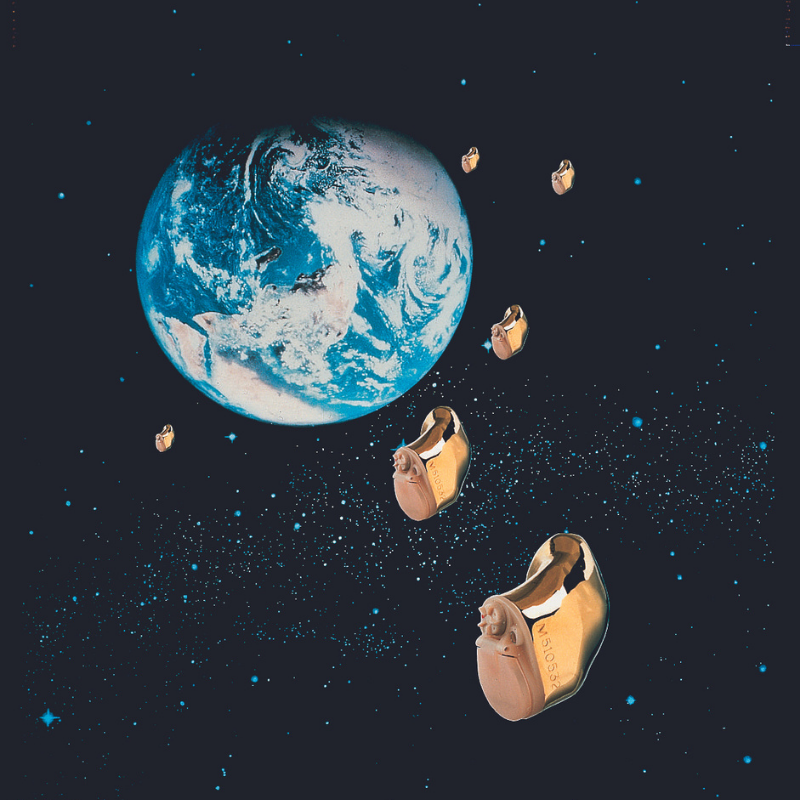
In 1983 the first Oticon “In The Canal” (ITC) instruments with gold-plated shells came on the market. At the time, hearing aids were primarily sold “in the hand”, which means that the customer would choose the design that appealed the most to them, rather than be adviced to get the product that provided the best, individual solution, sound-wise. Thus, a design was made where the shell was a thin gold-plated silver shell which was made using a delicate production technique.
The instruments did look impressive in the hand but when put into the ears, the fit had to be perfect. If not, the instruments would be conspicuous.
“Tina and I, my wife and I were in Portugal, and we were on the way down the stairs with the sun shining from above there was a school class on the way up the stairs. And they all looked at me. They looked but they weren’t interested in me, but they could see something sparkling. Yeah – and that gave me an eye-opening experience.”
Michael Male, 59 years
Knowledge about hearing and psychoacoustics became known as technical audiology. This knowledge found its way into hearing aids and audiologists started to work with the hearing aid manufacturers.
By the end of the 1970’s it became possible to make advanced, integrated circuitry (IC) with several transistors squeezed into very little space, typically a few square millimeters. The advantage was more signal processing with less space and an easier, less labor-intensive production method. Hearing aids became smaller, more robust, and easier to adjust to match the individual hearing loss.
The design of hearing aids became less colorful in an attempt to make them less conspicuous. The construction of the hearing aids was made in such a way that they were easier to service. Both custom-made in-the-ear styles and modular in-the-ear styles became more and more popular.
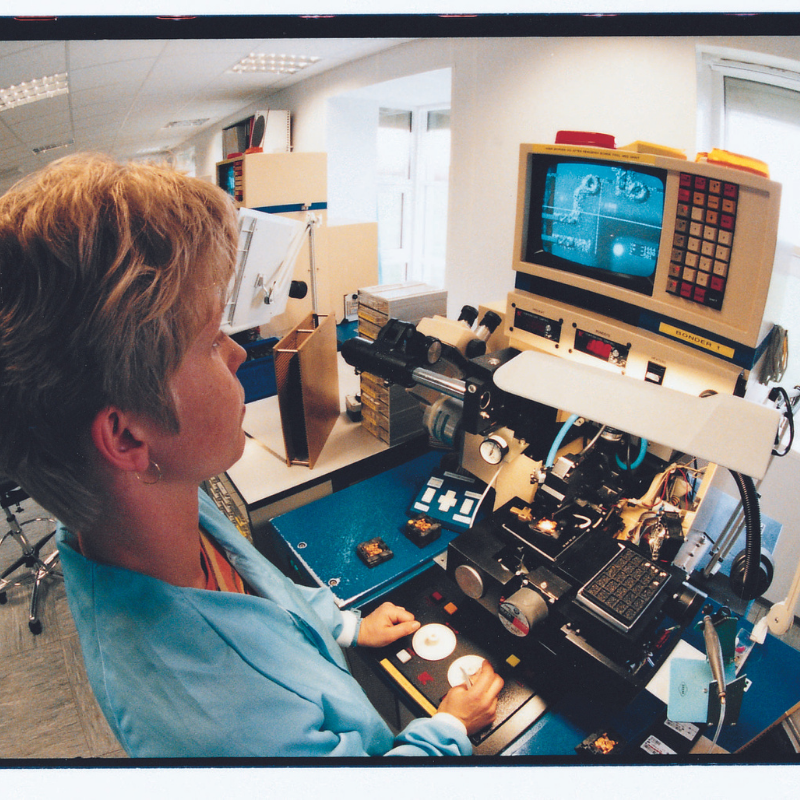
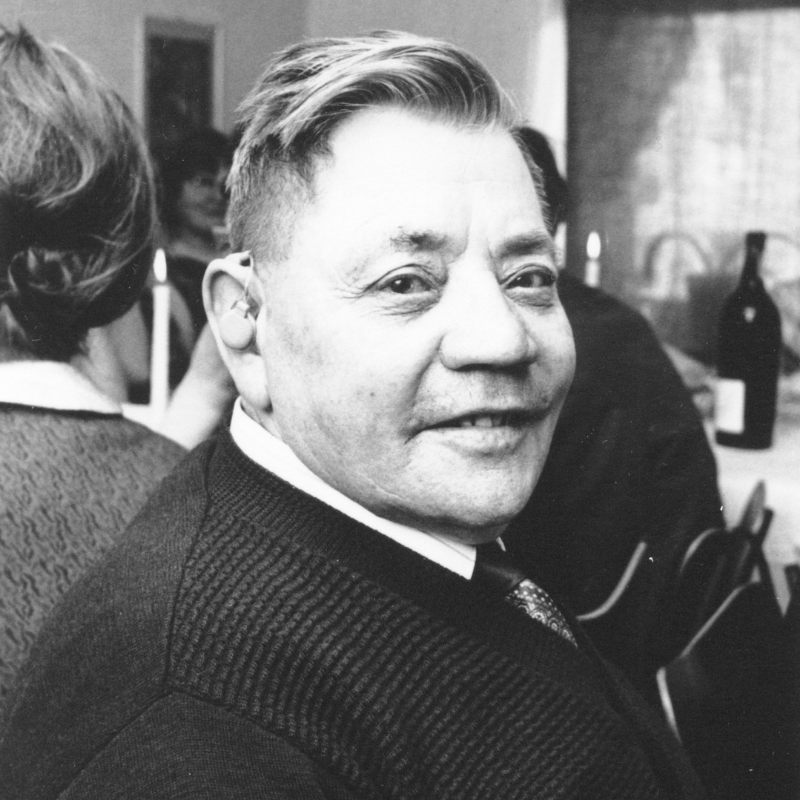
“My grandfather, Valdemar Jensen, had a hearing aid. It had a button at the ear and very often it would squeal, and he could not hear it himself.”
Lise Winter Jensen
“It is only recently I started to cut my hair away from my ears. People now realize that I use hearing aids, I do not go around and tell people that I use hearing aids.”
Karen, Female 59 years
“I started with the hearing aids behind the ears. They were significantly bigger than today. At that time, I used spectacles with heavy temples so there was not much space left for the hearing aids.”
Sven, Male 77 years
The most popular hearing aid style in the 1970’s and 1980’s was the “Behind the ear” hearing aid. Many different models were put on the market in order to meet the increasing demand for good solutions for the whole range of hearing losses. Special constructions were made to be able to provide amplification enough for even severe hearing losses and hearing losses with more special demands like sloping losses. Many people were reluctant to get hearing aids due to the fact the solutions available were not considered cosmetically attractive.
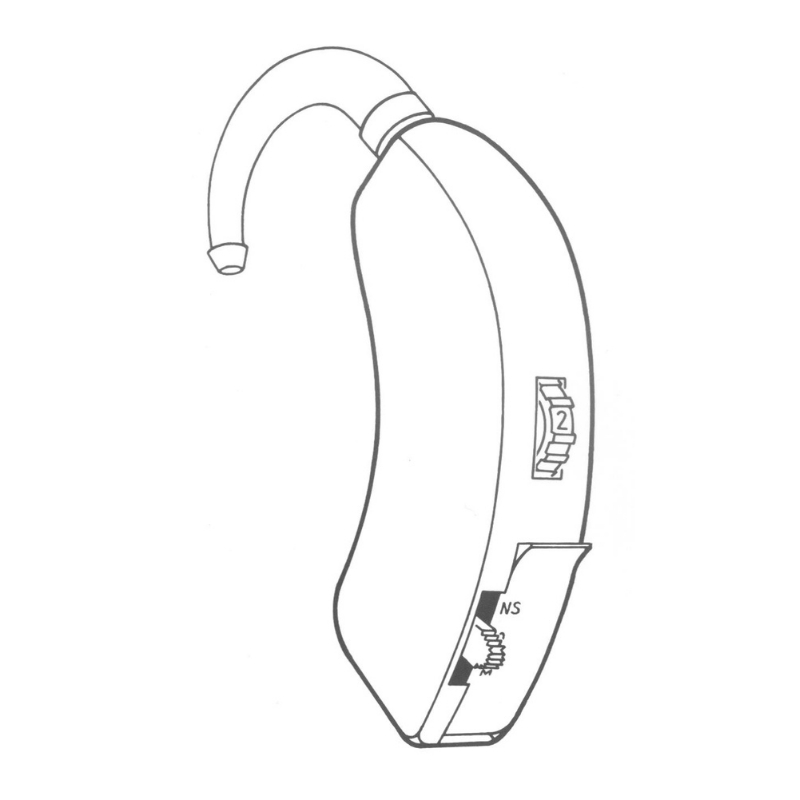
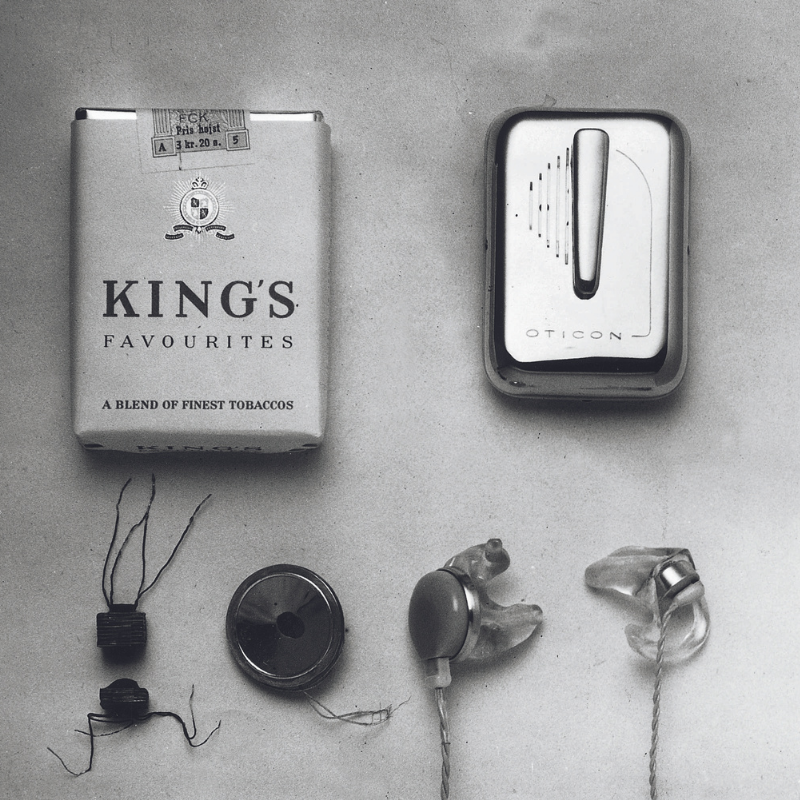
Technology used for portable communication in the military was adopted and used to develop electronic amplifiers based on vacuum tube technology. These amplifiers used two batteries, one to heat the filament of the tubes and one to deliver current for the amplification. This approach significantly improved the sound quality, and more amplification became available.
In 1953 the transistor became available to the hearing aid industry, and it was quickly implemented to develop new and smaller amplifiers. These amplifiers only used one battery, which enabled the development of much smaller hearing aids. Innovative engineers developed new hearing aid styles, like “Behind the ear” and “In the ear” styles, and spectacles with built-in hearing aids. The body-worn instruments were developed in the same size as a package of cigarettes to fit into a men’s shirt pocket.
The design of the hearing aids was elegant, often quite decorative, designed to be worn visible. Several creative solutions were seen, for instance a hearing aid placed on a hair comb, a tie clip construction, or a microphone placed in a pearl necklace.
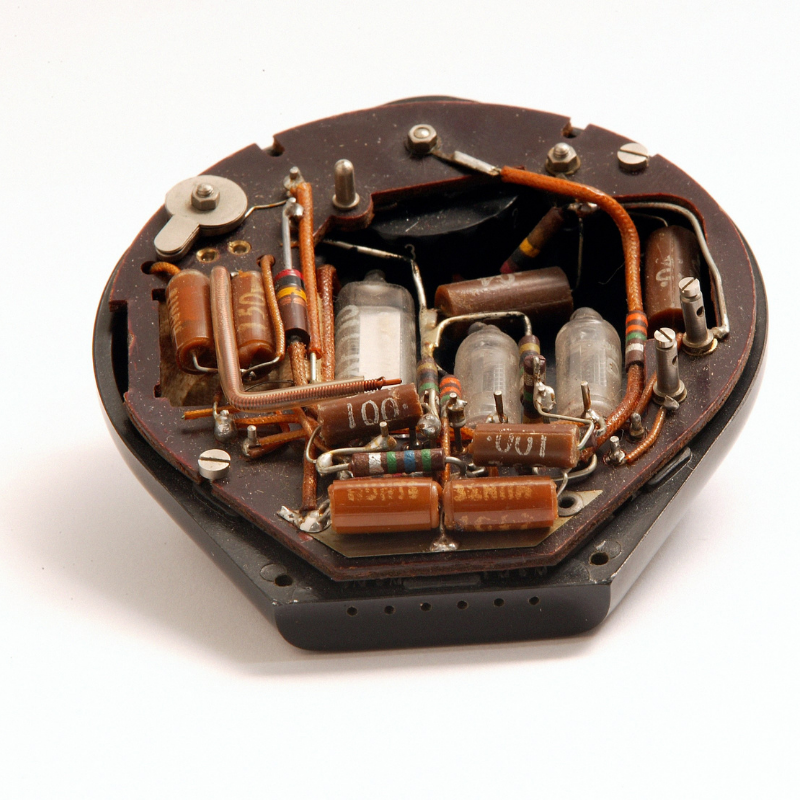
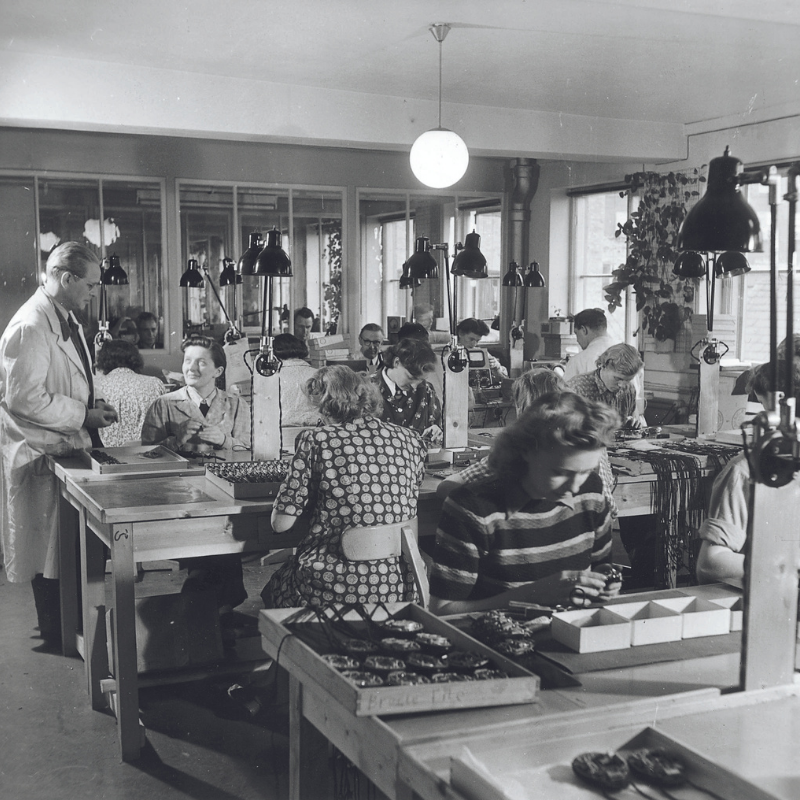
Here is how the technology was marketed in a brochure from 1946:
‘Your wishes come true! Hearing as good as normal can now be achieved. Our new valve amplified Oticon hearing aid restores your hearing up to 100 percent. It can be worn discreetly, and the appearance is in fact less visible than a pair of glasses. The crystal microphone, which does not exist in any other hearing aid, provides a significantly expanded hearing range and a natural, distinct sound reproduction.
More volume. Oticon provides all the volume you can dream of, crystal clear and constant, many times more than the volume of the earlier aids. Increased sensitivity: In Oticon even faint sounds and whispering voices become audible and the hearing range is increased to enable hearing over a remarkable distance.’
In 1946 the first hearing aid developed and produced in Denmark was introduced by Oticon. The hearing aid was simply called Oticon model TA (Danish abbreviation for “Tunghøre Apparat”, apparatus for the hard of hearing). It was based on vacuum tube technology and was available with three different sound transmitting devices: Big earphone, small earphone, or a bone conductor.
Here is one of the statements used:
“I lack superlatives strong enough to express my joy and happiness with the new Oticon. After having used it for almost one year I cannot find any complaint against it. It has fulfilled my most daring hopes, and I now feel that I am functioning as well as my normal-hearing fellow human beings. I even think I have a small advantage compared to normal hearing people when I am in a party situation experiencing that the manners get too bad for words – I simply turn off the aid. Therefore, be assured of my daily gratitude.” Snekkersten 2 July 1947 – Yours sincerely – Anton Jørgensen.
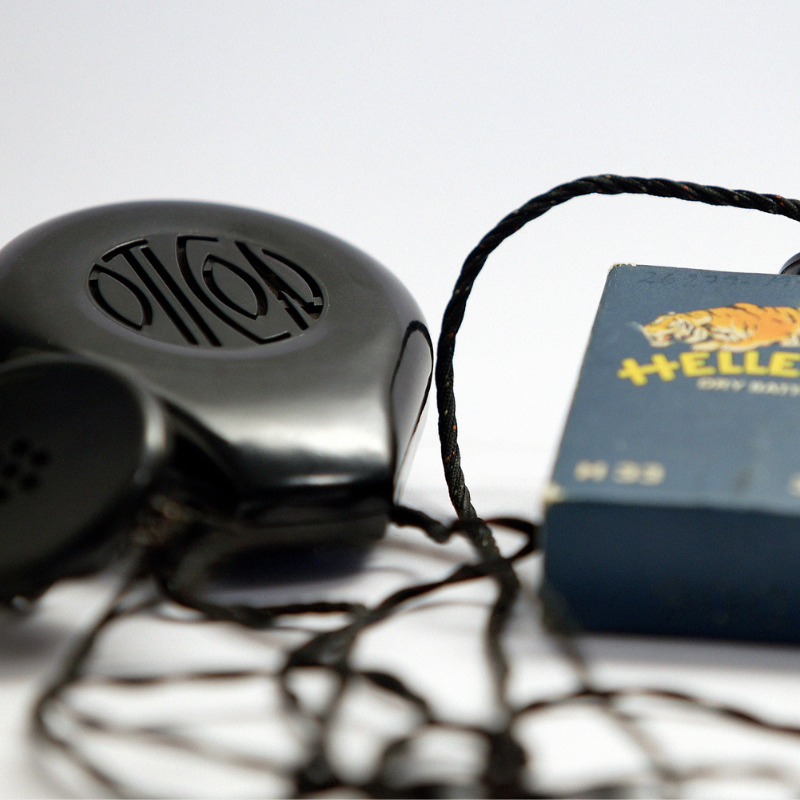
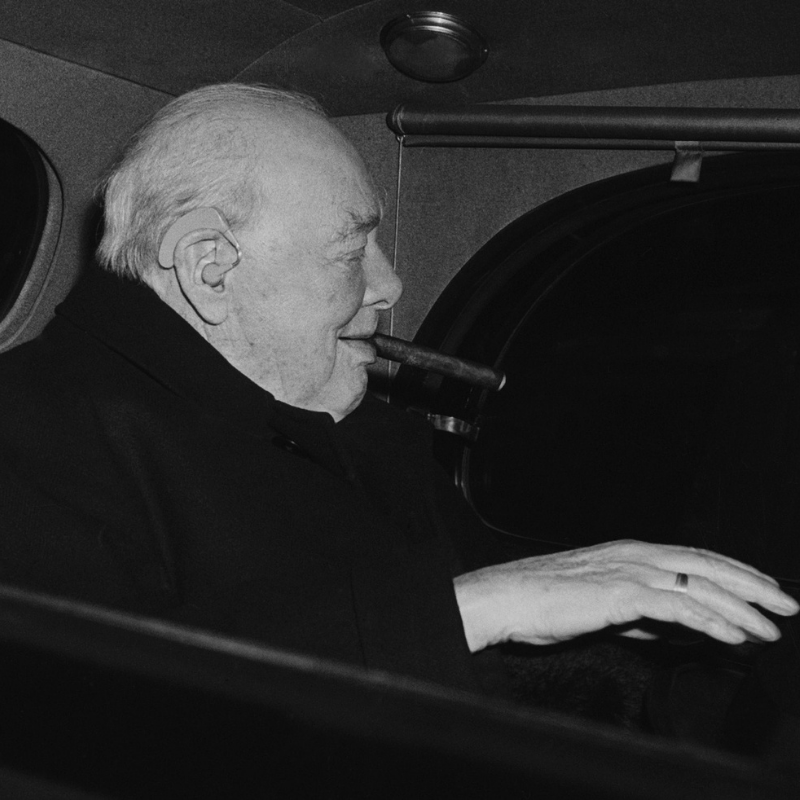
The transistor could be used to develop small amplifiers which sparked many engineers’ creative thinking. Most of the hearing aid styles we know today were developed during the 1950’s. The “Behind (or over) the ear” style quickly became popular. It was easy to wear and less conspicuous than previous styles.
Sir Winston Churchill was the Prime minister of the United Kingdom for two periods. First during the Second World War and again from 1951 to 1955. During his second period his hearing had declined to a stage that required people to shout in order for him to hear. He only once commented on his hearing loss: “It is a bloody nuisance”, he said. He was very reluctant to get a hearing aid, but he finally got one.
A patent describing the combination of spectacles and hearing aids was filed as early as 1909. The first spectacles with hearing aids came in 1954. Two American hearing aid manufacturers introduced spectacles with hearing aids at the same time. The small transistor amplifiers were placed in the temples of the glasses. The microphone was placed close to the front frame and a snout, that was connected to the ear-mould with a tube, was placed just where the temples bend.
America’s first lady, Eleanor Roosevelt, was using spectacles with hearing aids. She wrote: “It is convenient that the hearing aids are built into my glasses. I use my glasses in the theater at public meetings, board meetings and conversations in smaller groups. Using my glasses eases my hearing because the instruments amplify the sounds.”
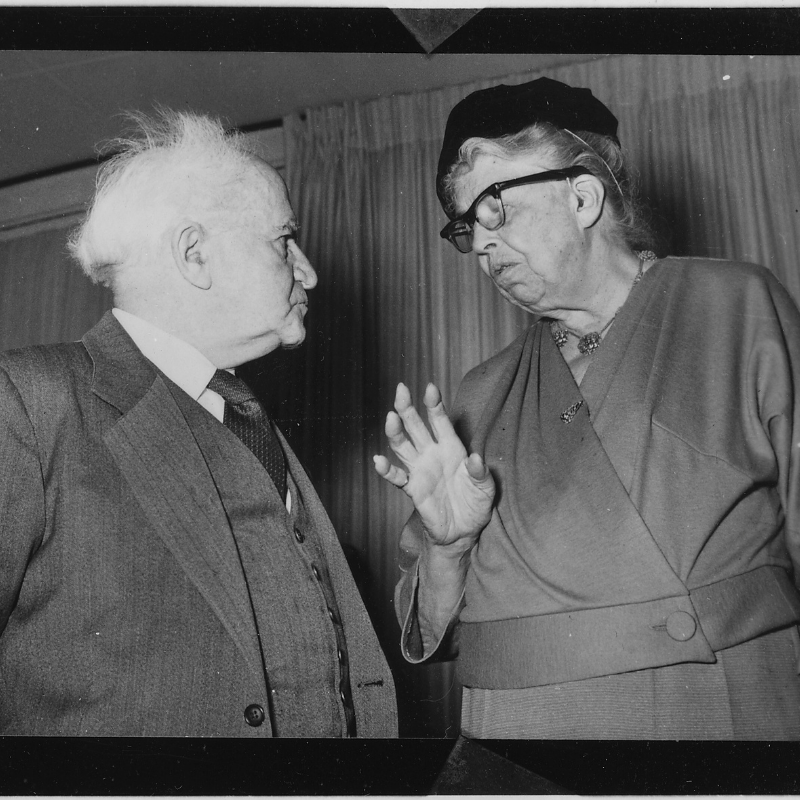
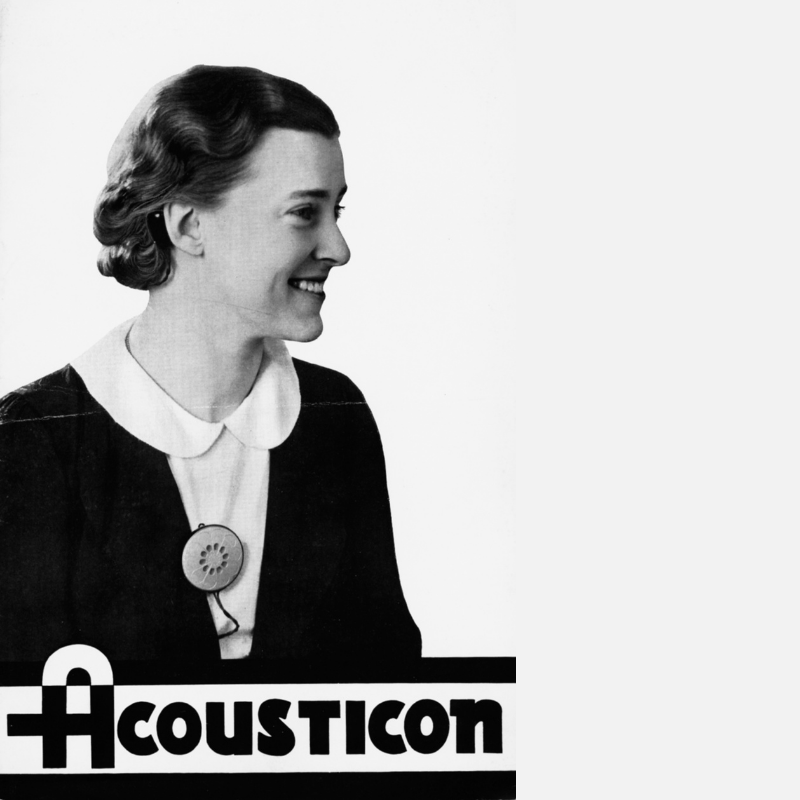
Technological advances enabled better impedance-matching between the microphone and the earphone. This allowed for more amplification and improved sound quality. The impedance-matcher was a small device which was plugged directly into the battery.
Smaller earphones that could be placed in the outer ear became available. The hearing aids became smaller, and more colors became available on special request.
Tabletop hearing aids with electronic amplifiers appeared in the late 1930’s.
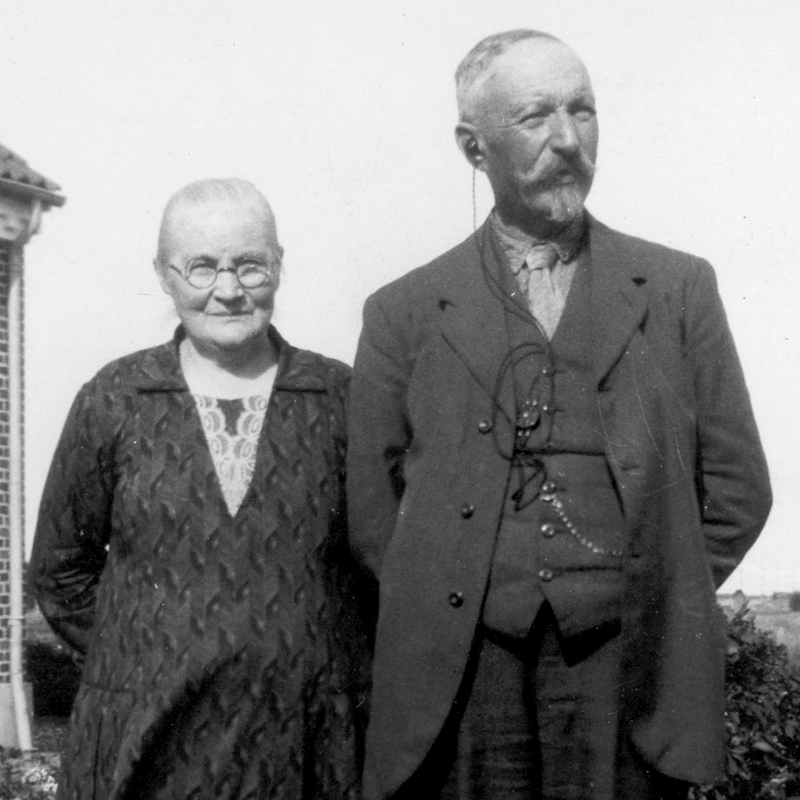
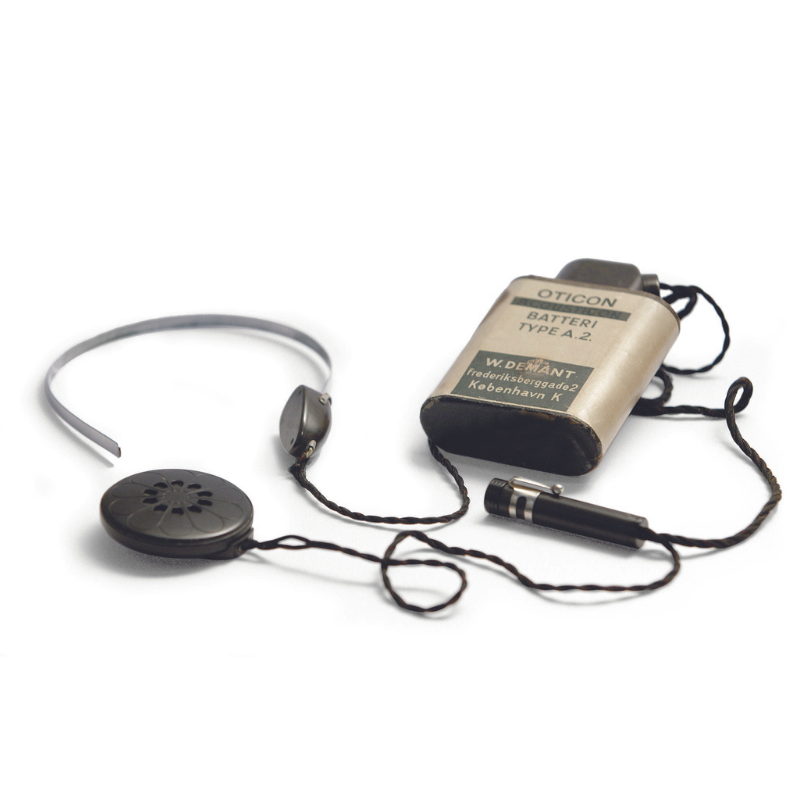
Transmission of sound by vibration was rediscovered in 1932 by Hugo Lieber. Already in medieval times it was known that sound transmission by means of vibration of a wooden stick, or a plate placed between the teeth could be used as an aid for hearing.
Lieber constructed an electromagnetic transducer, a so-called bone conductor that would vibrate rather than produce sound as a loudspeaker. When the bone conductor was placed on the skull, these vibrations would be picked up by the inner ear. This principle is most efficient when people have a defect in the sound transmission chain (missing outer ear, ear drum or middle ear).
The very first, commercially available hearing aids were manufactured by Akouphone Company, New York. The Danish born Queen Alexandra used an electric hearing aid during her coronation in 1902, and this helped pave the way for the instruments. The microphone was based on a carbon dust (later carbon ball) construction which limited the use of the instruments in humid weather because the carbon dust/balls clumped together.
The sound quality was shrill, and the amplification was limited. All the instruments were made of bakelite and metal and they were black because most people were wearing black clothes at that time. The instruments consisted of three parts, all connected by wires: an earphone (either on a handle or a head band), a microphone, and a battery.
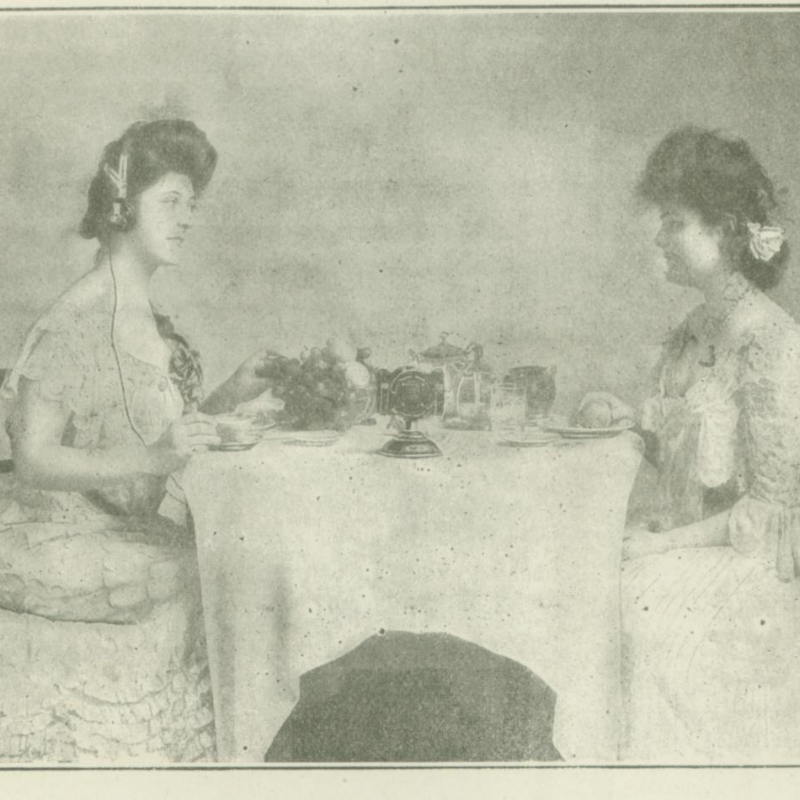
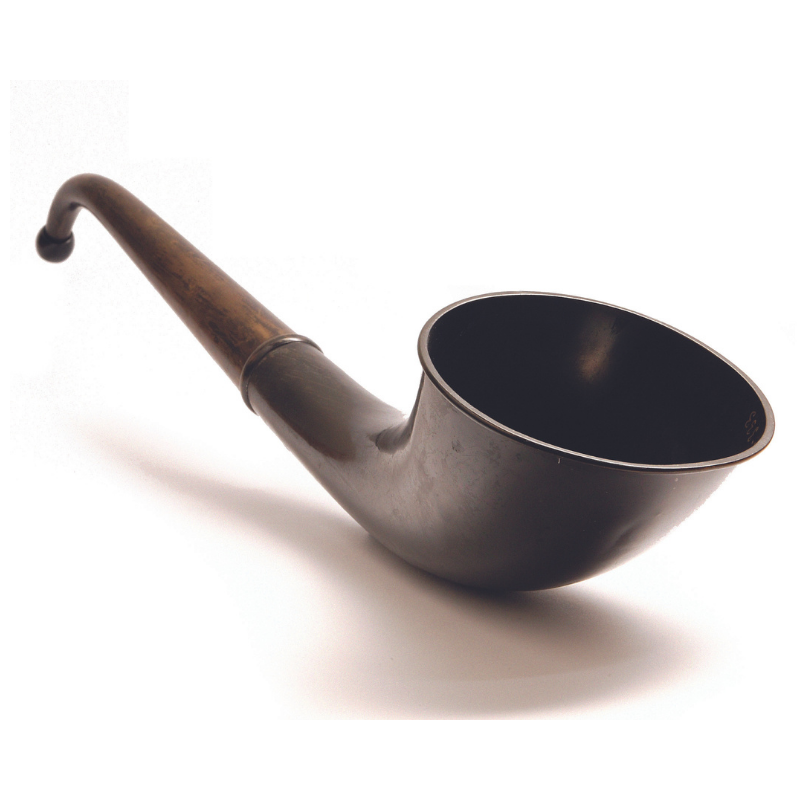
Before electrical hearing aids became available and affordable to more people, hearing trumpets were the only available aid for people with hearing problems. A cupped hand behind the ear does provide some help, but when this is no longer enough, a hearing trumpet would be more efficient. Hearing trumpets came in many different sizes and shapes, and the bigger, the more efficient. Most of the trumpets were made in metal.
Mrs. Eline Begstrup used a hearing trumpet. An acquaintance of hers remembered that you had to shout into the funnel in order to speak with Mrs. Begstrup. The photo is from 1940, at which time electrical hearing aids had been available for many years, but it remains unknown why Mrs. Begstrup did not have one of those.
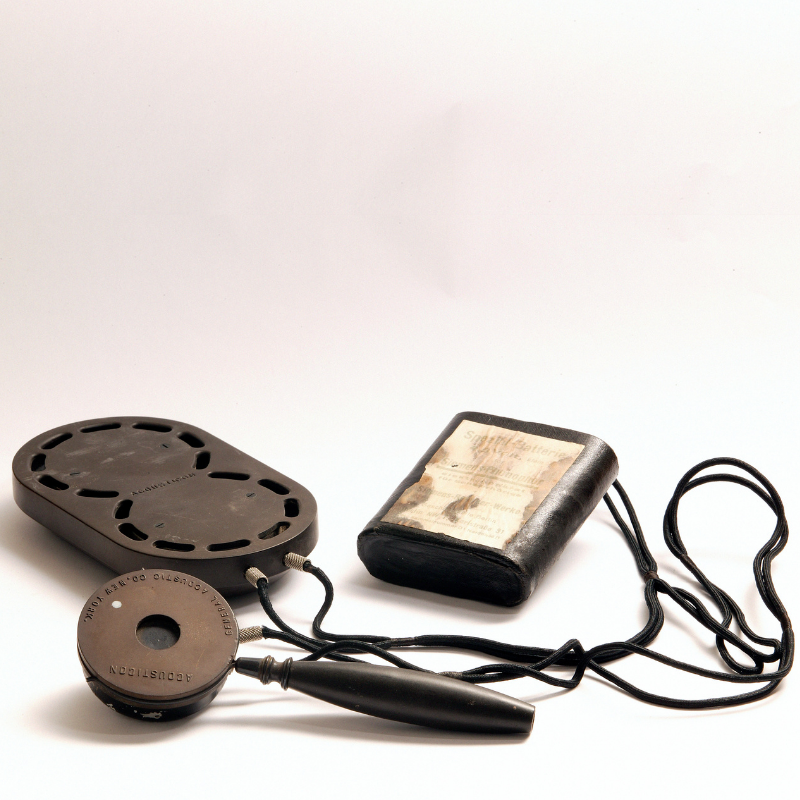
© 2024 Eriksholm – Designed by Aveo web&marketing